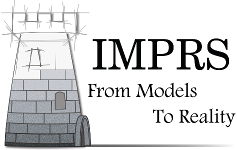Speaker
Description
Vibrational action spectroscopy employing infrared radiation from a free electron laser is successfully used since many years for the vibrational and structural characterization of gas phase aggregates. Despite the high sensitivity of this method, no relevant studies have yet been conducted for solid samples. An ultra-high vacuum (UHV), chamber incorporating surface science techniques, has been constructed at the free electron laser of the Fritz Haber Institute (FHI FEL). An aim is to apply this method to solid surfaces in order to learn about their vibrational, electronic and structural properties. As central components of heterogeneous catalysts, deposited metal clusters on oxide surfaces have been intensively investigated; yet in most cases little is known about their atomic structure, since it is experimentally not easily accessible. With messenger atom action spectroscopy, the vibrational modes of clusters are detected via infrared heating induced desorption of rare gas atoms attached to the clusters. A quadrupole mass spectrometer and a low temperature scanning probe microscope are available for the detection of the desorption process. Comparison of the experimental vibrational spectrum with quantum chemical calculations provides structural information and information about electronic properties. As the preliminary topics, we studied the action spectroscopy of rutile TiO$_\mathrm{2}$(110), as well as V$_\mathrm{2}$O$_\mathrm{3}$(0001)/Au(111) in the middle infrared range at liquid helium temperature. The results of the former sample surface revealed a series of defect independent bulk vibrational states of TiO$_\mathrm{2}$(110), which were not well recognized before. The results of the latter sample surface clearly demonstrated that our method is surface sensitive and capable of investigating a wide range of scientific topics.
Motivation:
Incorporating the high sensitivity action spectroscopy method with surface science techniques to study the structural and electronic properties of the oxide film supported metal clusters model catalysts, in order to broaden our understanding of structure-reactivity relation of heterogeneous.

